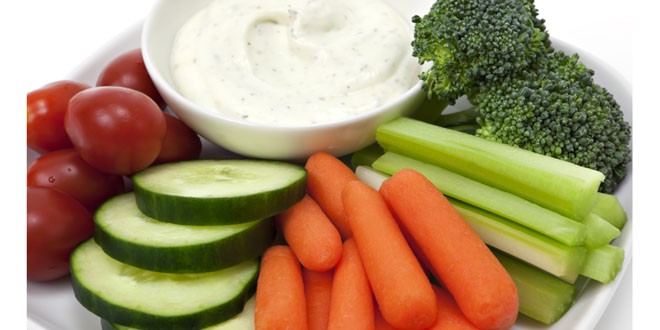As we continue our journey through the grocery store, we head to the snack aisle where we find crackers, cookies, chips and other similar choices. For people with diabetes, navigating the grocery store for snacks is probably the most challenging section of the store. The challenge is in what to focus on when looking at the food labels; the amount of sugar, fat, or total carbohydrate? Adding to the confusion many snack-type foods make claims about containing whole grains, less sodium or no trans fats, giving the impression that it’s the healthier choice. Although promoted as “snack” foods, these choices are not necessarily the best choices to have as a snack.
Snacking isn’t necessary for everyone who has diabetes. However, for some people snacks play an important role in their meal plan. Ideally, these snacks should be as healthy as possible; not such an easy task when many of the items in the “snack aisle” are filled with not-so-healthy ingredients offering only empty calories, contributing to weight gain and increased blood sugar. For the healthiest snack choices, it’s best to venture away from and avoid the snack aisle altogether and head toward the produce and dairy aisles instead. It’s also best to never shop when you are hungry as you are more likely to be tempted by the less healthy choices.
With any snack option, portion control is the most important thing to keep in mind. Many manufacturers of cookies, crackers, granola bars and other snack foods now offer “100-Calorie” pre-packaged portions which help keep calories and carbohydrates in check. If your favourite choice isn’t available in pre-packaged portions, you can create your own smaller portions by separating the larger package into several smaller ones when you get home. Here are some tips to help you select snack items that keep you on track with your dietary goals.
Choose low-fat, whole-grain crackers that contain at least 2 grams of fibre per serving and no trans-fat. Stick to a portion that offers about 15 g of carbohydrate. The number of crackers providing 15g of carb will vary depending on the size of the cracker itself. Try combining crackers with a source of protein such as low-fat cheese to reduce the impact the crackers will have on your blood sugar and help better satisfy your hunger.
Eaten in moderation, nuts make a great snack choice. With protein and healthy fats, nuts make an ideal snack choice. Diabetes Canada’s 2018 Clinical Practice Guidelines suggest that including nuts in your diet can improve cholesterol and blood sugar levels in people with diabetes. Look for unsalted almonds, walnuts, or any mixed nuts. Watch the portions as the calories can add up quickly. Because nuts don’t contain carbohydrate, they won’t prevent hypoglycemia or low blood sugar; important to keep in mind if snacks are included in your meal plan to prevent low blood sugars.
Natural popcorn which is high in fibre and low in sodium is a healthier choice over chips or pretzels which can be loaded with sodium. Lower fat chips aren’t always the better choice either as the reduced fat usually means a higher amount of carbohydrate per portion. As an occasional treat, chips or pretzels can be enjoyed in moderation; but shouldn’t replace more nutritious healthy snack choices.
Most granola bars and cookies offer lots of added sugar and little fibre. Treat these the way you would treat candy. Some granola bars with a good amount of fibre could be consumed more often. Compare food labels to find the brand with the least amount of sugar and fat per serving. But if you’re craving a less healthy option, choose a smaller portion and enjoy occasionally. Diabetes Canada recommends that up to 10% of daily calories can come from added sugar, so these treats can fit into a meal plan.
Talk to your Registered Dietitian about how to fit snacks into your meal plan. If you have a favourite healthy snack food idea, I would love to hear about it. This is one of the most common questions I hear from people living with diabetes.
To learn about other healthier choices while food shopping, check out Navigating the grocery store expert blogs by Dietitian and Certified Diabetes Educator, Joanne Lewis.
 Diabetes Care Community Learn, connect and care
Diabetes Care Community Learn, connect and care




